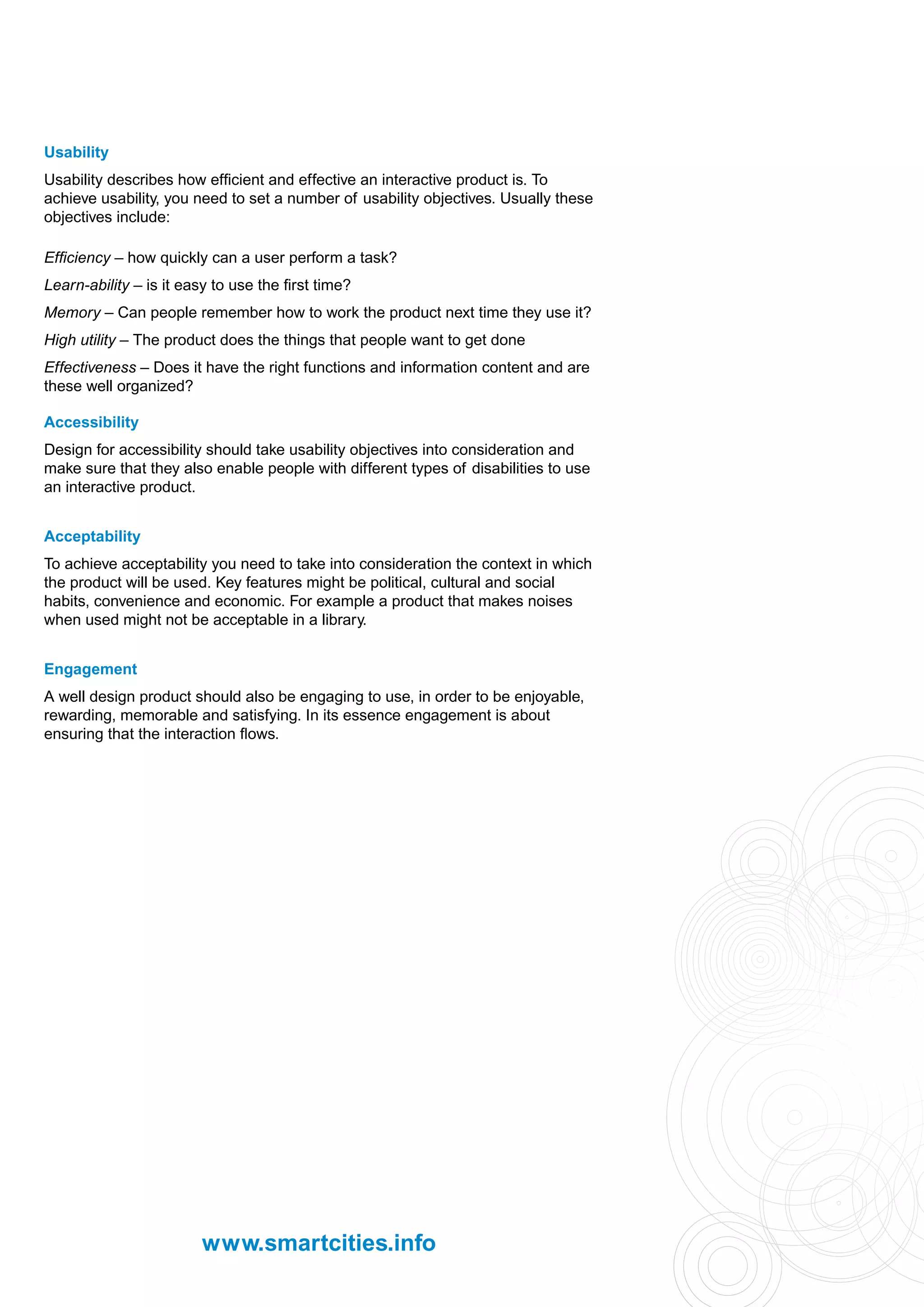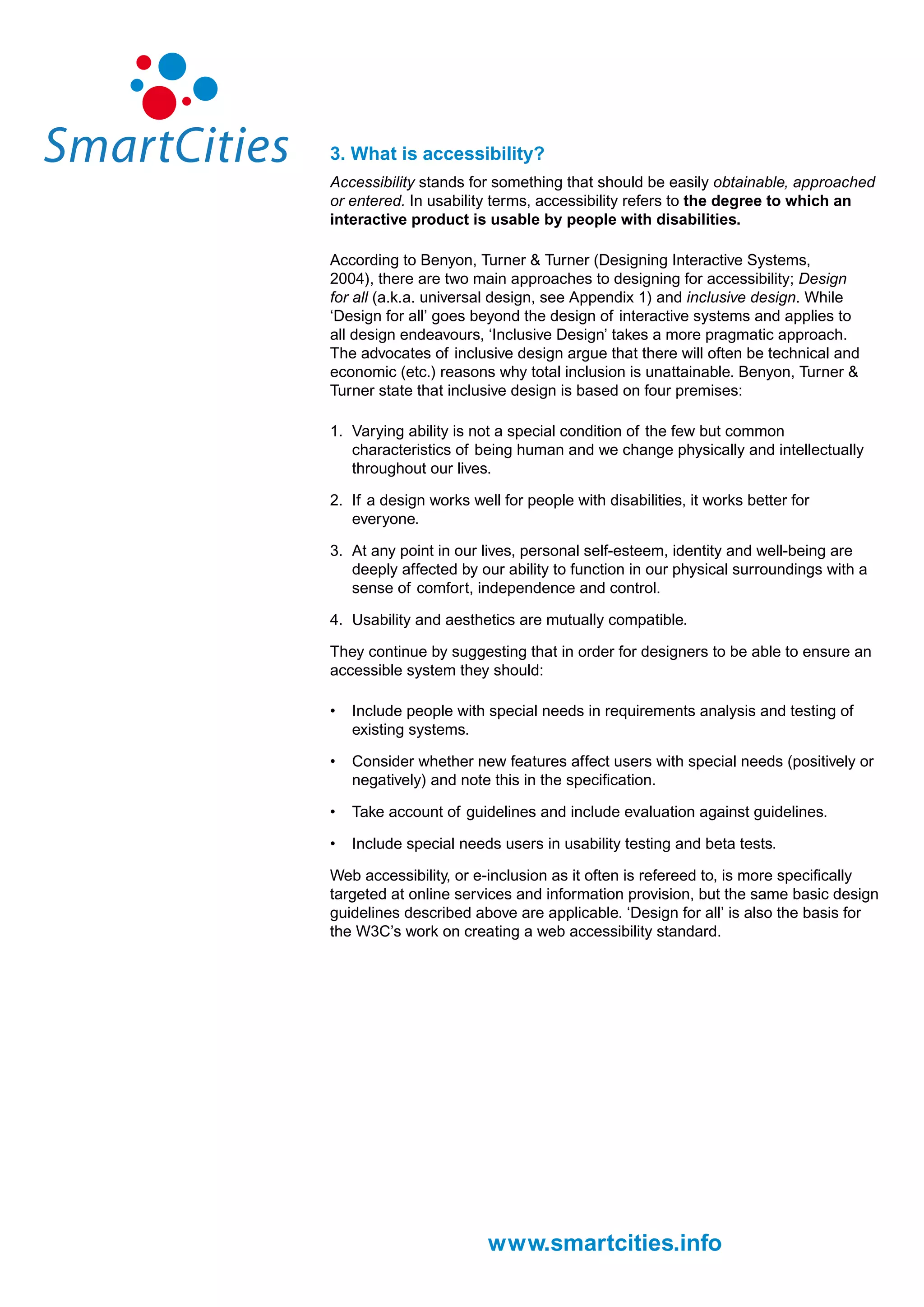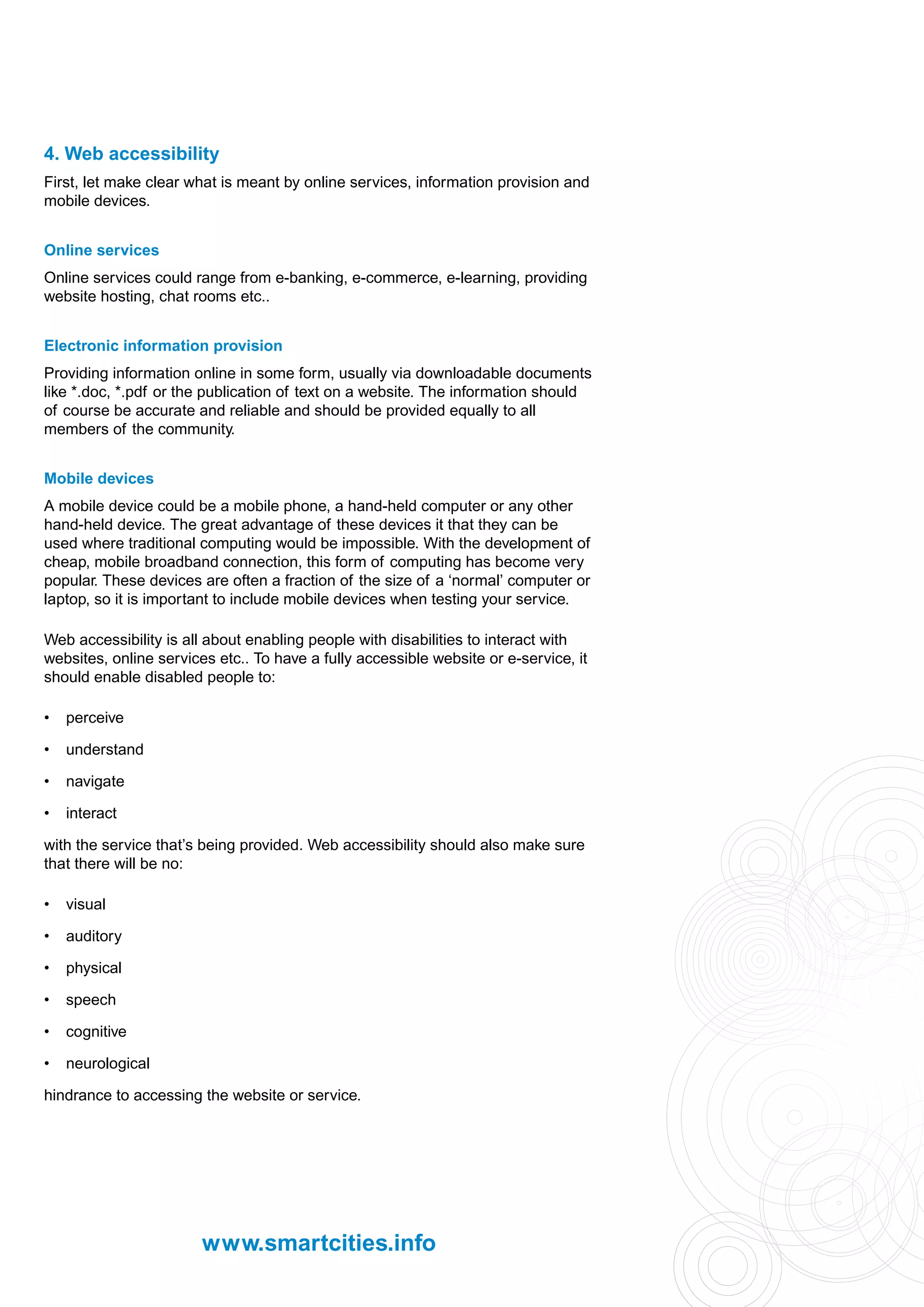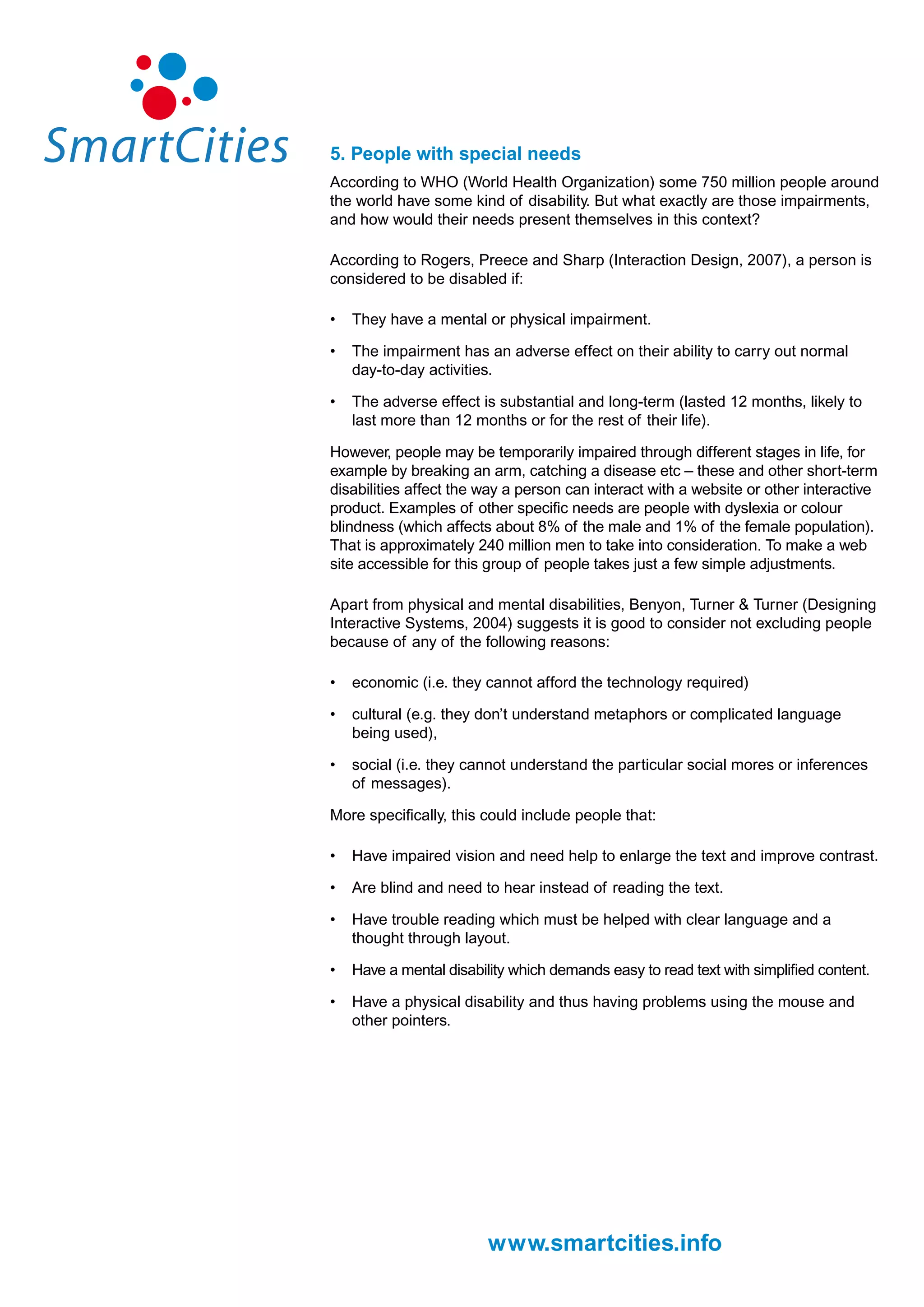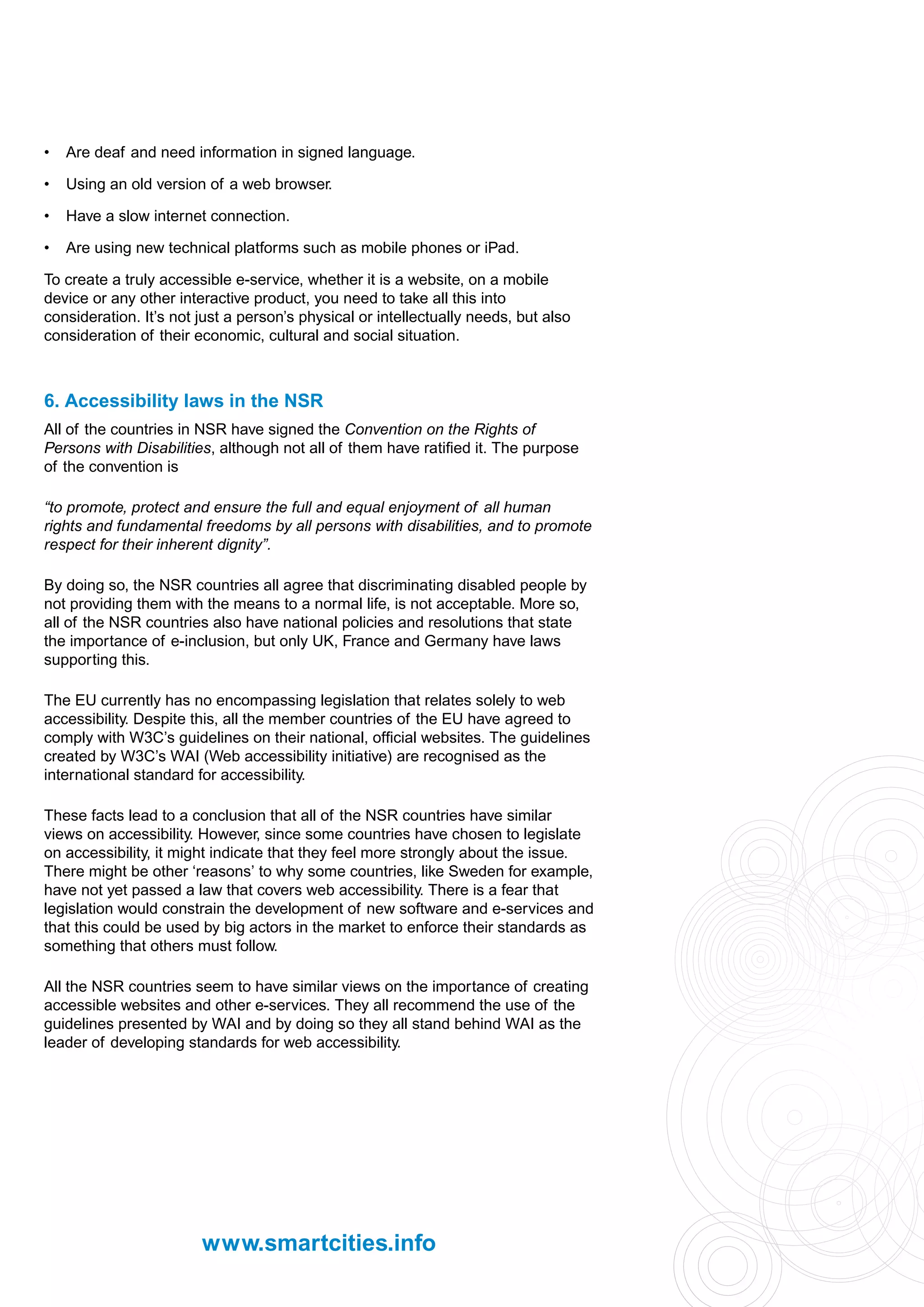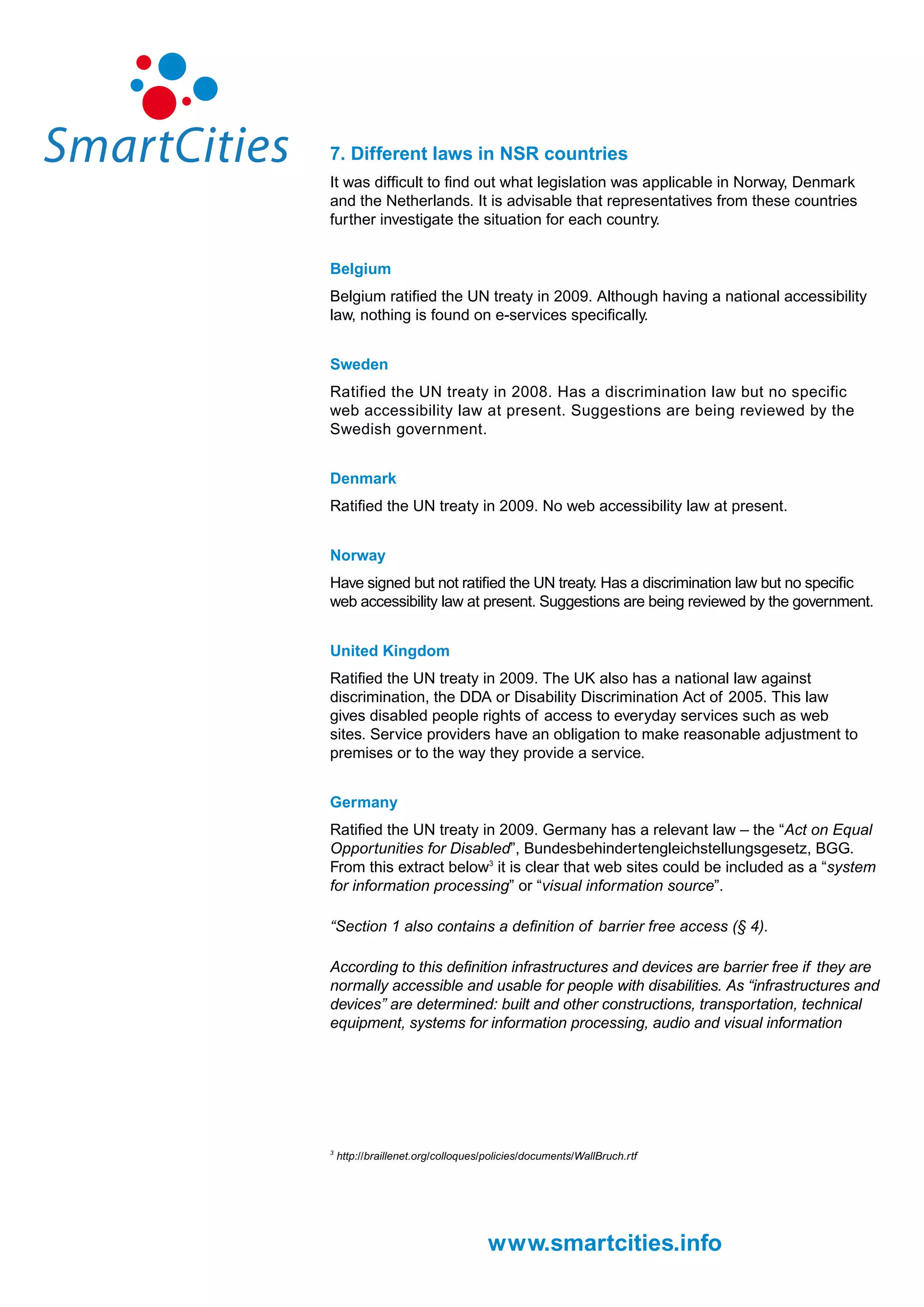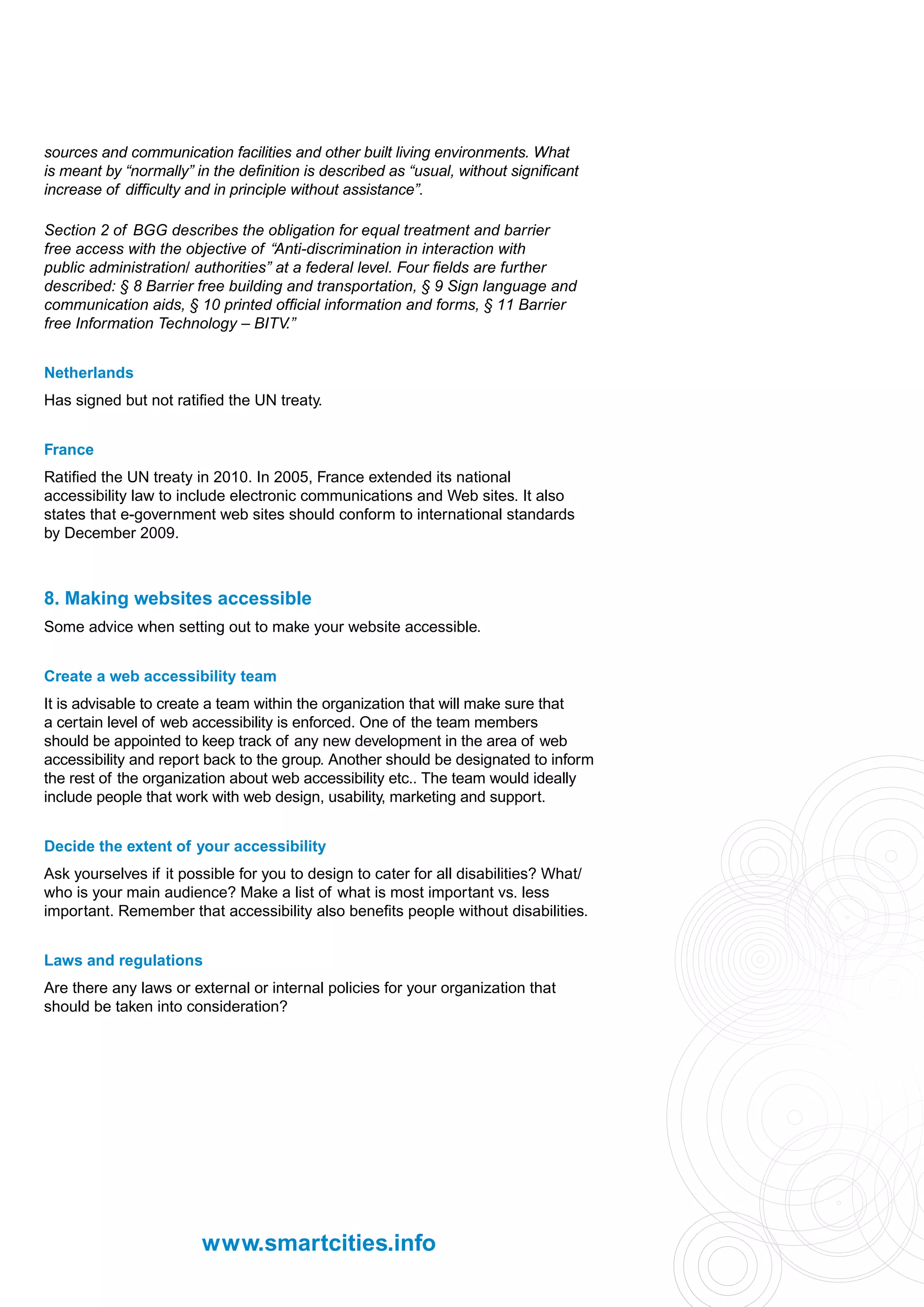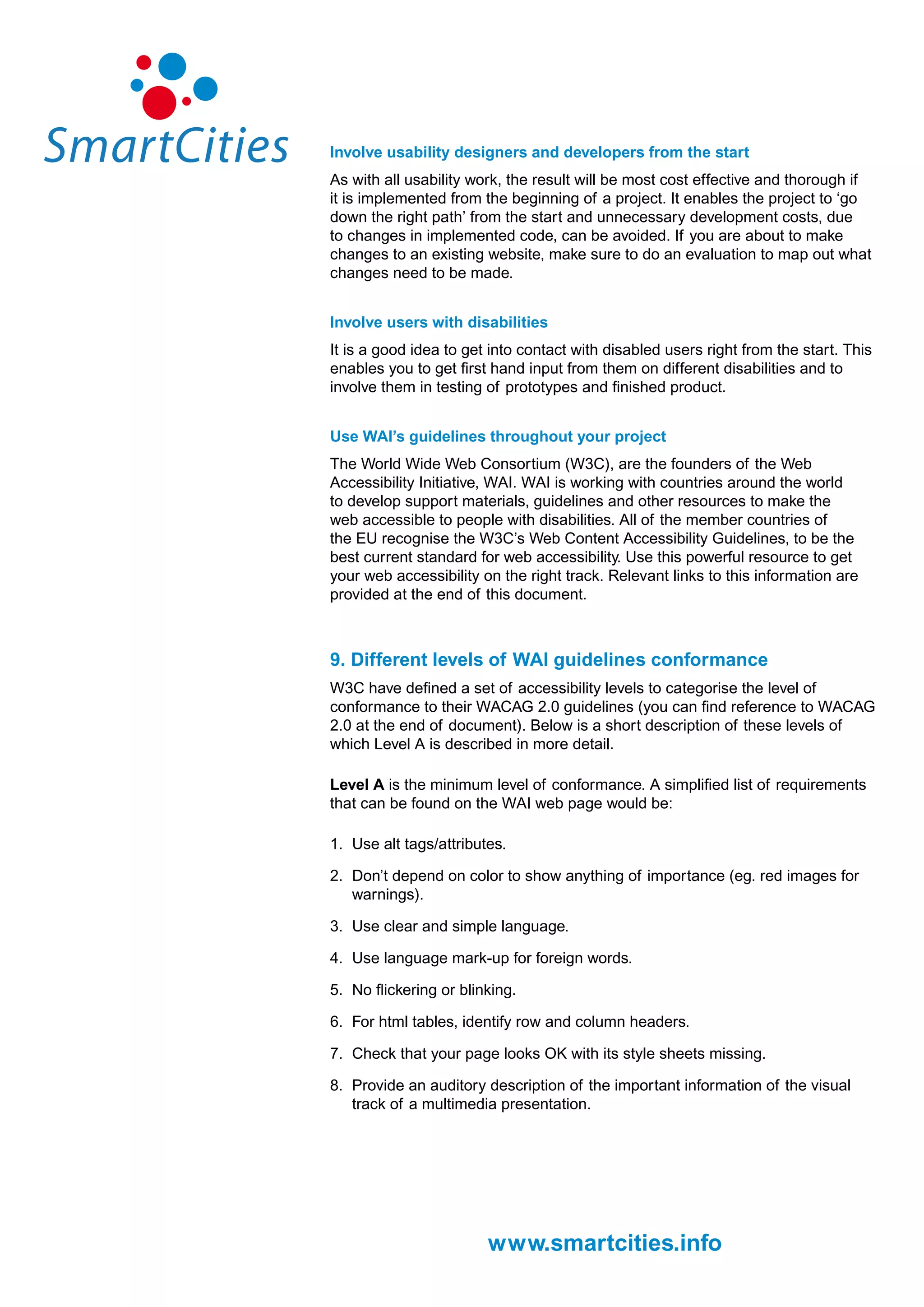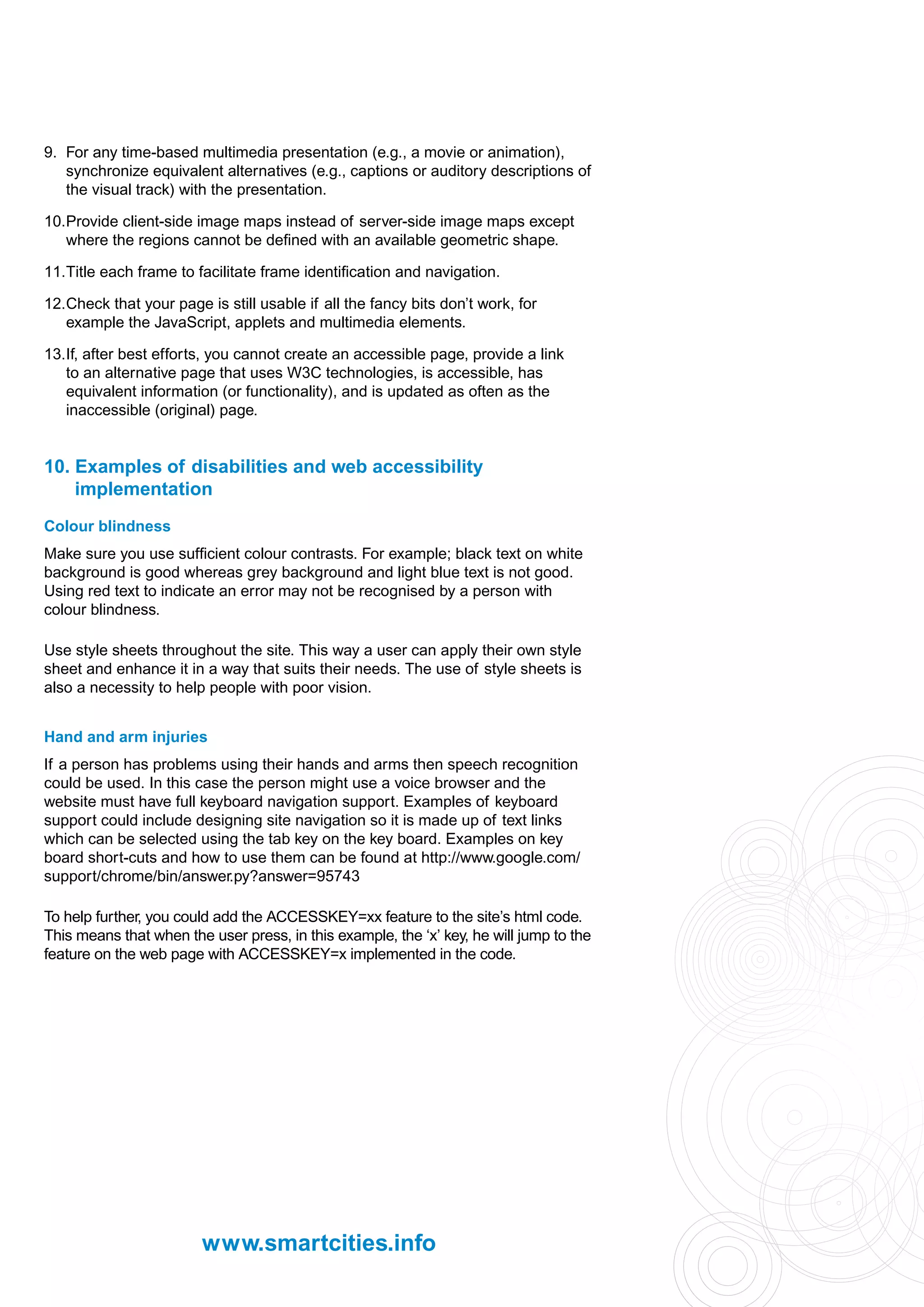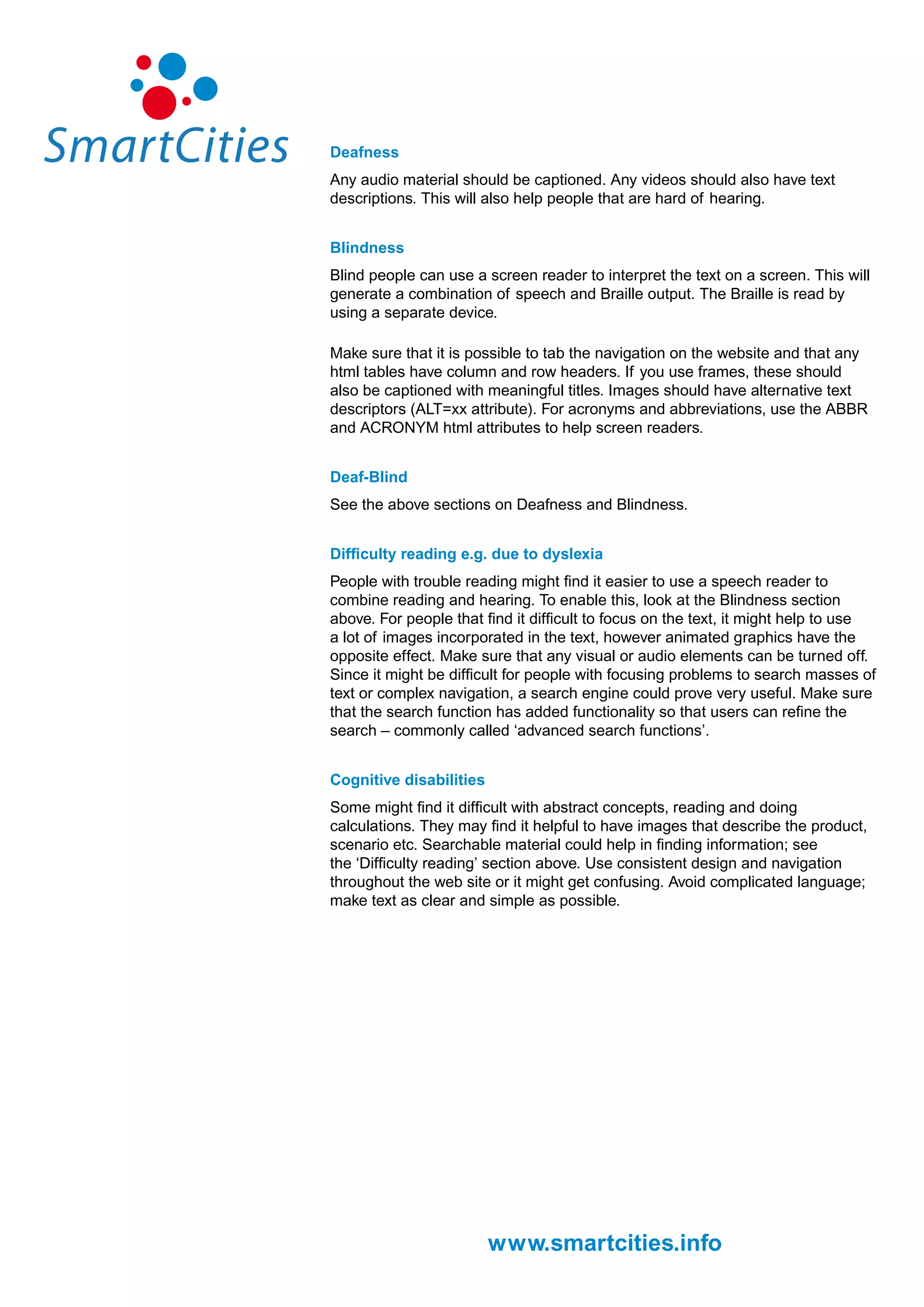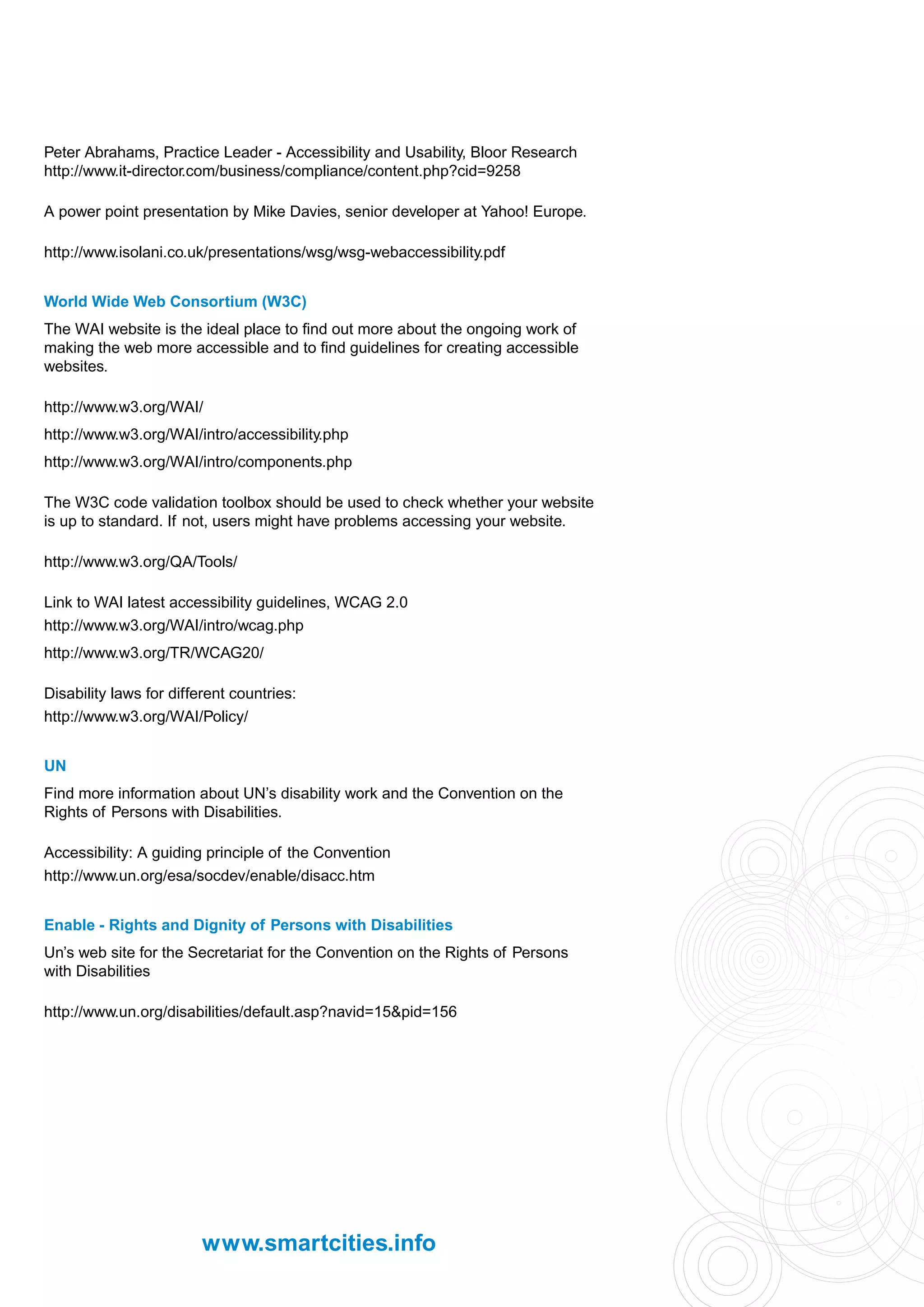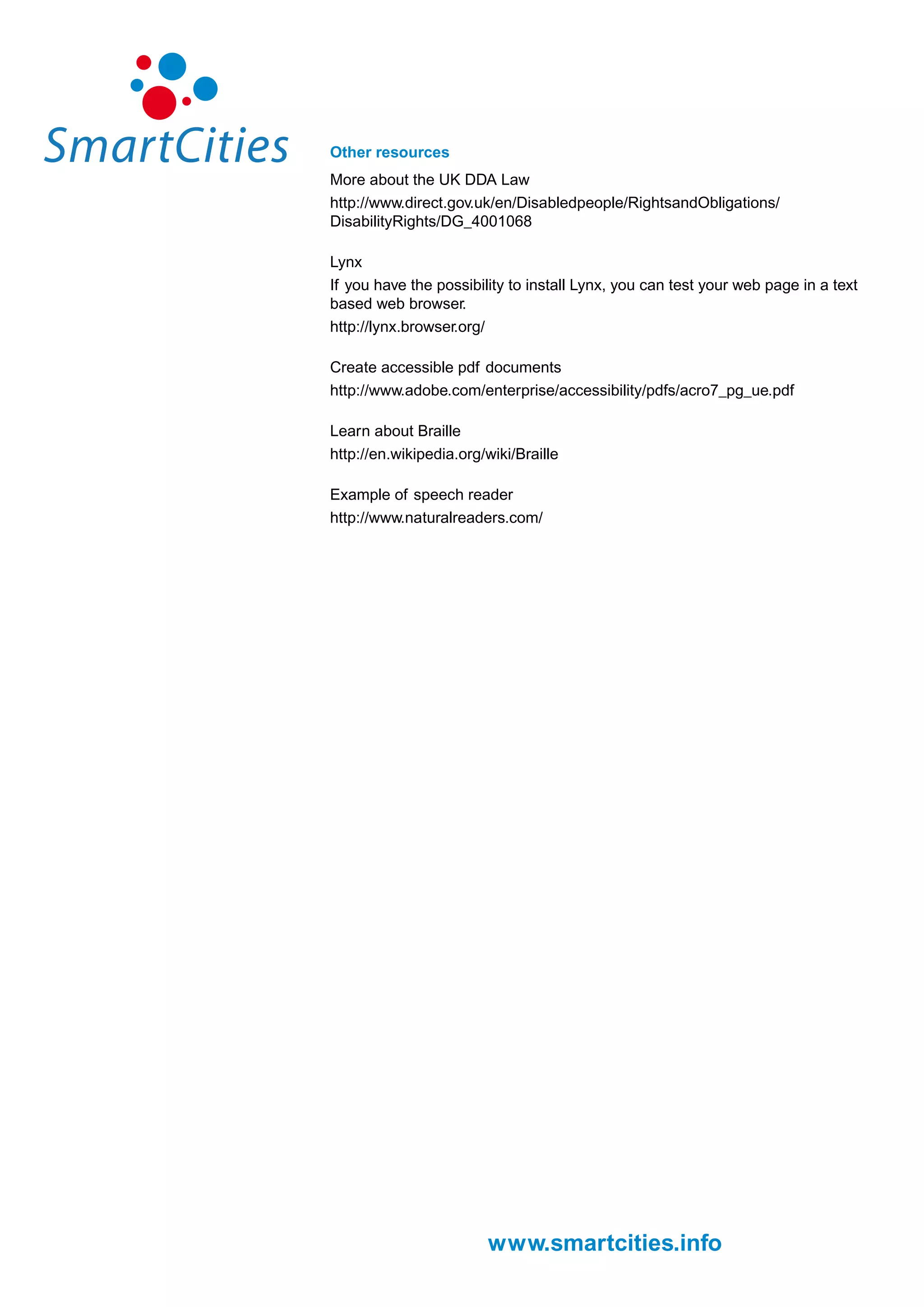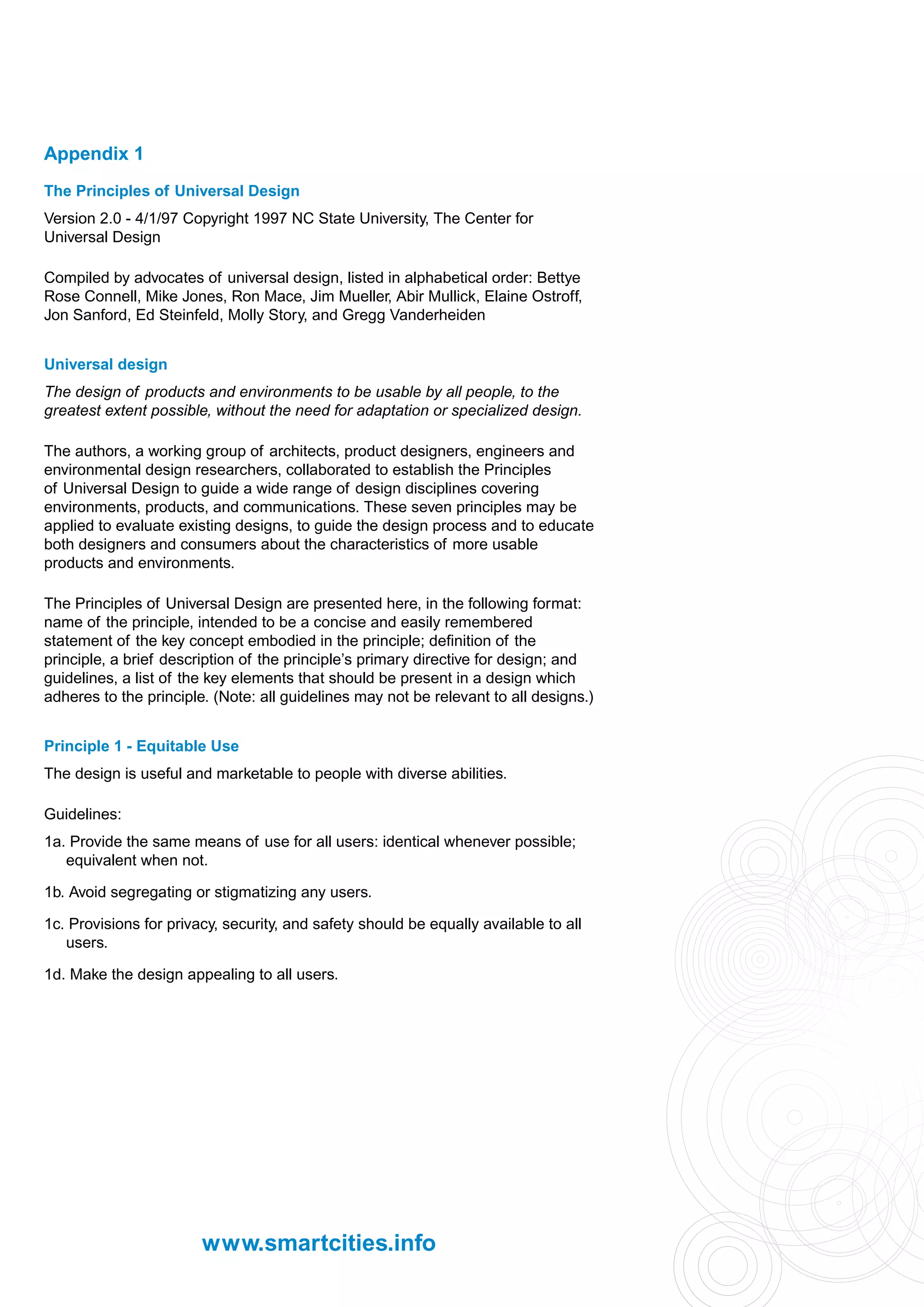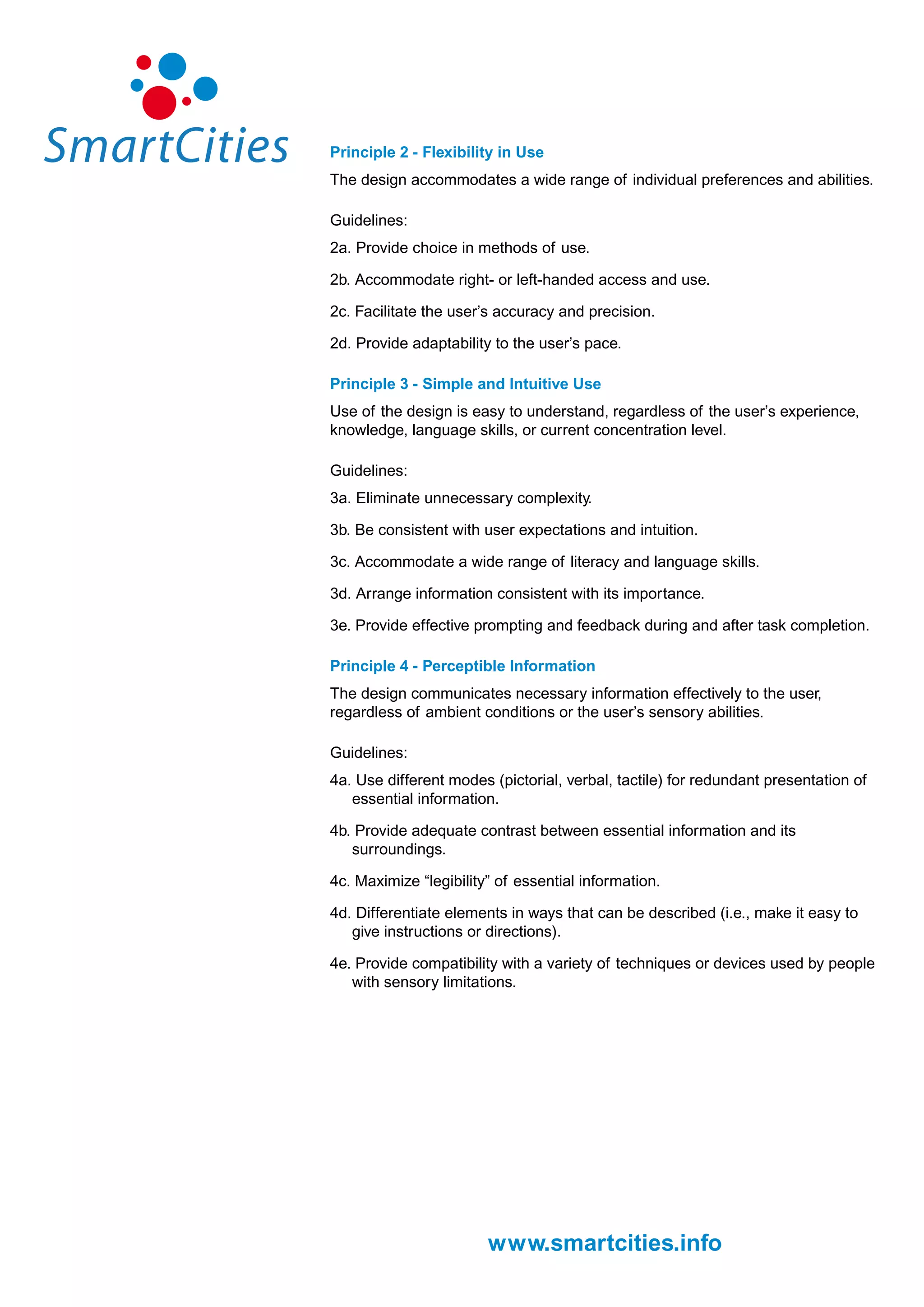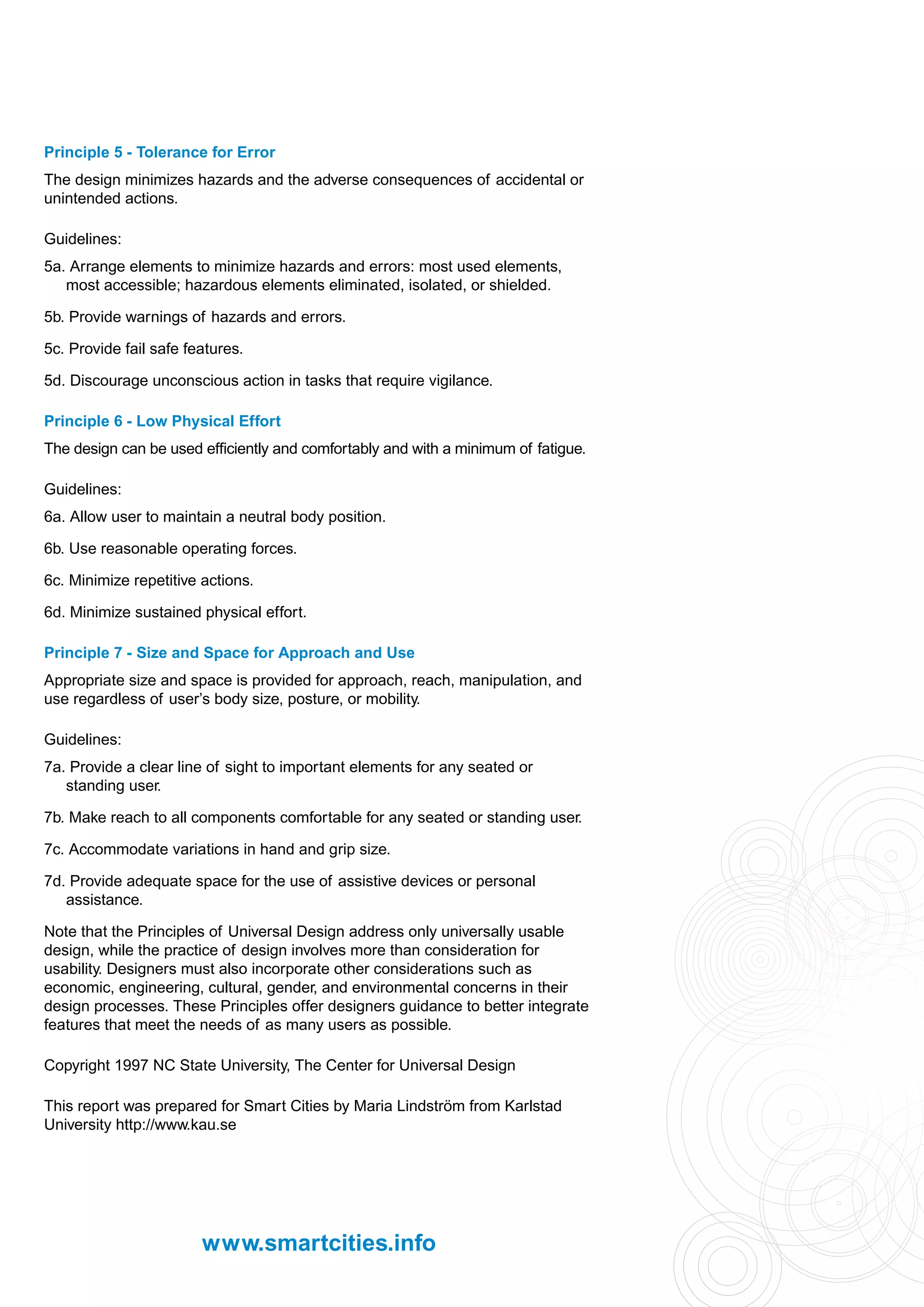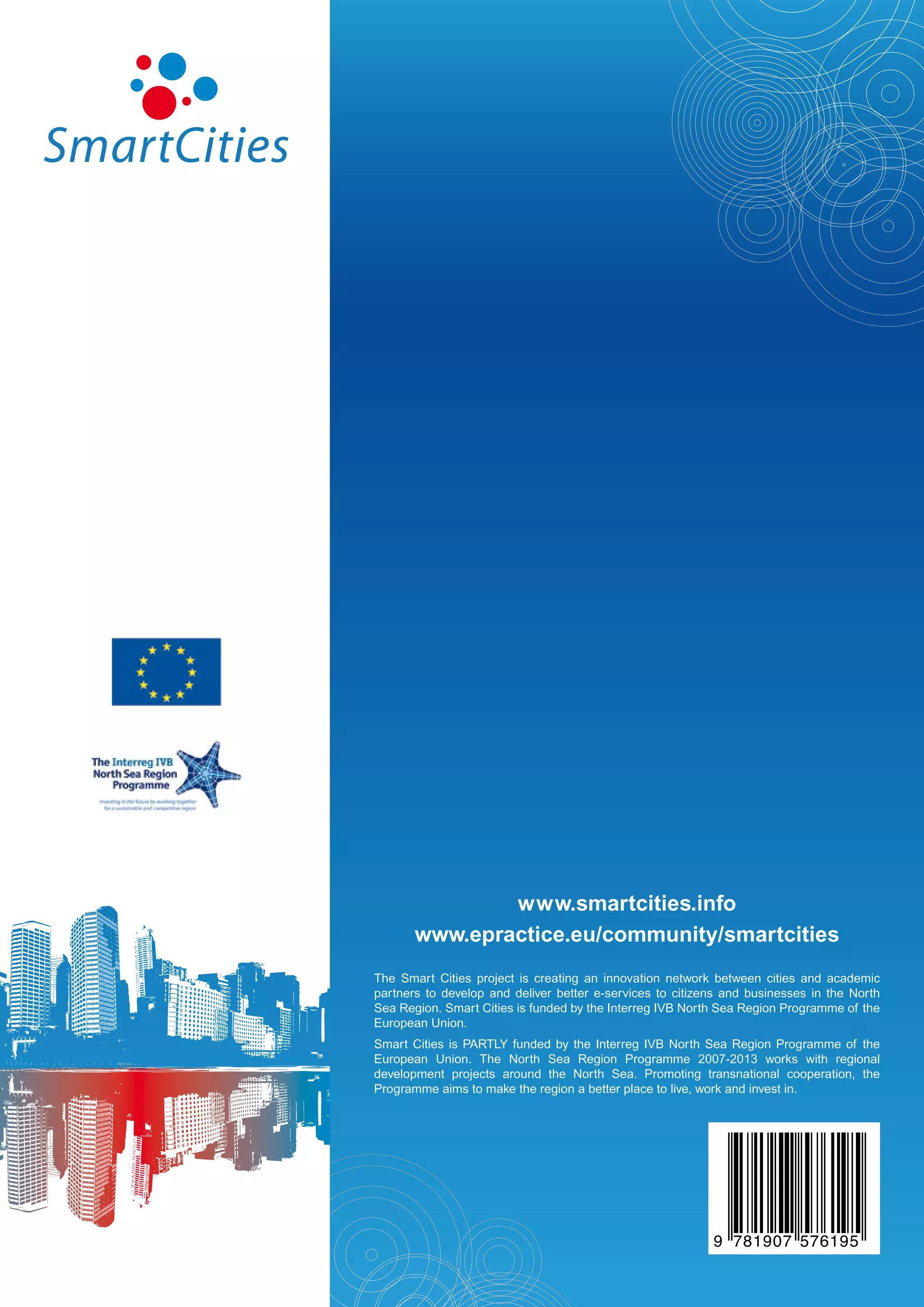This document discusses web accessibility and its importance for designing accessible websites and online services. It provides definitions and guidelines for accessibility and usability. Key points include:
- Accessibility aims to ensure people with disabilities can access the web, while usability focuses on how efficiently users can complete tasks.
- Countries have varying laws on accessibility, with some having specific web accessibility legislation while others recommend guidelines.
- Accessibility considers the needs of people with various disabilities, including visual, auditory, physical, cognitive and neurological.
- Creating an accessible website involves following guidelines, involving disabled users, and addressing laws and regulations.
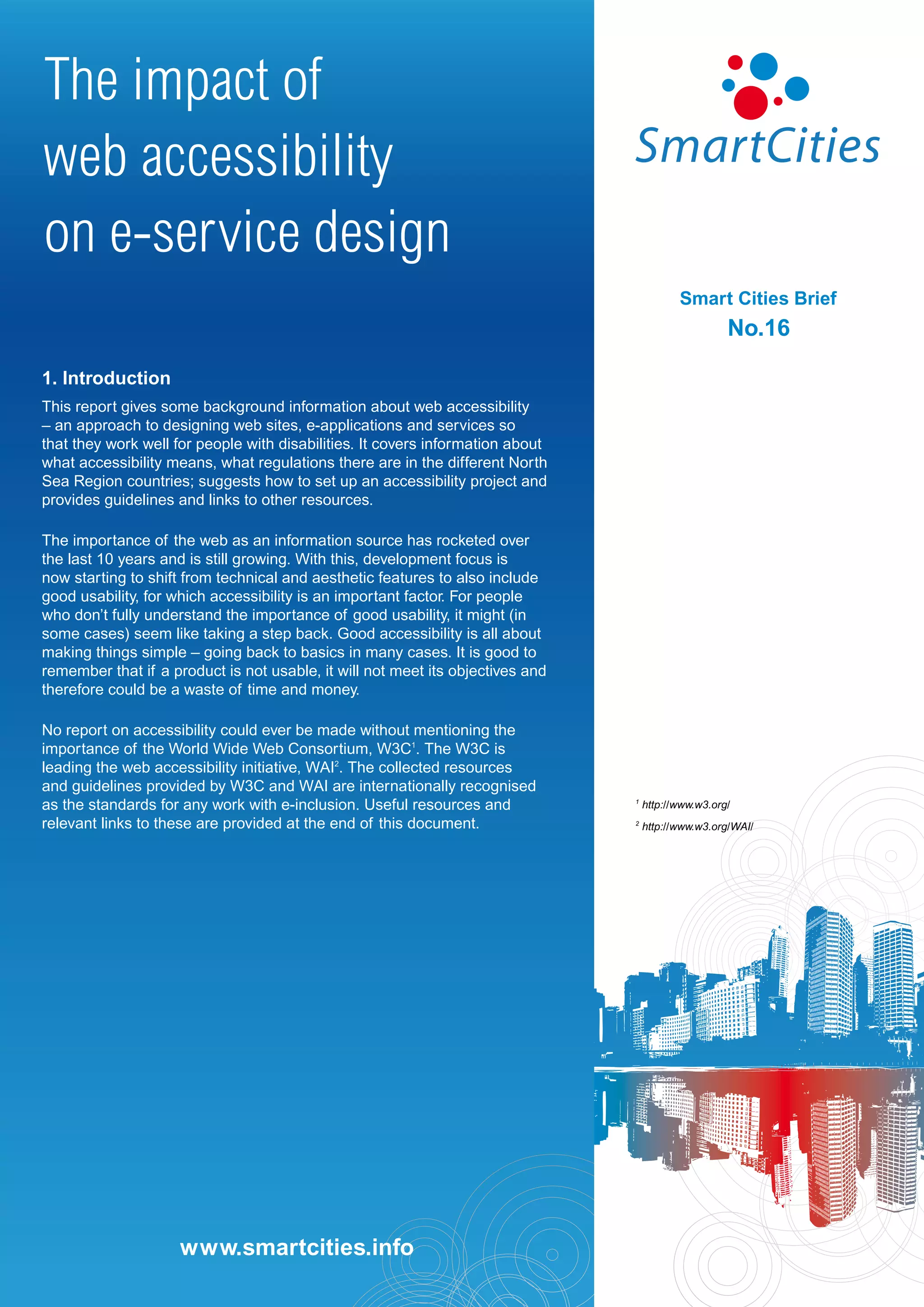
![2. Difference between Usability and Accessibility
The definition of usability is relatively precise and widely accepted:
“The extent to which a product can be used by specified users to achieve
specified goals with effectiveness, efficiency and satisfaction in a specified
context of use”.
For accessibility the definition is less clear. One way to describe web
accessibility is:
“…that people with disabilities can perceive, understand, navigate, and interact
with the Web, and that they can contribute to the Web” (http://www.w3.org/WAI/
intro/accessibility). It is also important that web accessibility “encompasses all
disabilities that affect access to the Web, including visual, auditory, physical,
speech, cognitive, and neurological disabilities.”
In the literature there are different opinions about what accessibility is and its
scope. Some writers feel that accessibility is distinct from usability, while others
see it as a subset of usability, meaning that accessibility is specific types of
usability problems (Thatcher et al, 2003). Shneiderman (2003) introduced
another term – ‘universal usability’ arguing that “Universal usability goes one
step further [from accessibility], striving to make the content and functionality
accessible and usable by all”. Petri and Kheir (2007) believe that “accessibility
and usability problems can be seen as two overlapping sets, which would
include three categories:
• Problems that only affect disabled people; these can be termed “pure
accessibility” problems;
• Problems that only affect non-disabled people; these can be termed “pure
usability” problems;
• Problems that affect both disabled and nondisabled people; these can be
termed “universal usability” problems.
Regardless of how it is defined, accessibility and usability are important
elements in web design. Both accessibility and usability should be implemented
in a well designed product. Interaction design is all about putting humans rather
than technology first. To achieve this there are some key concerns that needs
to be considered - these are usually referred to as Accessibility, Usability,
Acceptability and Engagement.
www.smartcities.info](https://image.slidesharecdn.com/smartcitiesresearchbrief16impactofwebaccessibilityone-servicedesign-111027174714-phpapp02/75/Smart-Cities-Impact-of-web-accessibility-on-e-service-design-2-2048.jpg)
